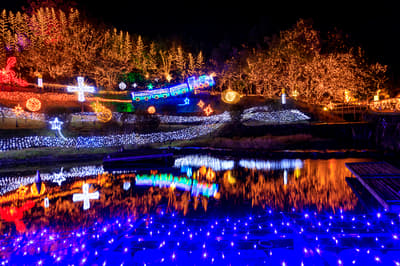In winter, Fukuoka offers many events and scenery that can be enjoyed only at this time of year. This is the season of illumination, Japanese year-end and New Year’s events, and much more. This article details the highlights of winter travel, from descriptions of the weather and clothing to the best places to visit in Fukuoka in winter!
Fukuoka in Winter

Weather
In winter, Fukuoka is increasingly cold, with average temperatures ranging from about 4 to 12 degrees Celsius. Temperatures can drop below freezing, especially at night and early in the morning. Occasionally, snow may fall due to cold waves, but snow accumulation is rare. Wind chills can also be felt, so warm clothing is necessary.
Things to Do
In winter, visitors to Fukuoka can enjoy illumination, Christmas markets, and other events unique to winter. In particular, Hakata Station and the Tenjin area are illuminated on a large scale, making the nighttime streets fantastically colorful. It is also recommended to enjoy warm local delicacies such as motsunabe (Offal hotpot) and tonkotsu ramen. Let’s warm and heal your cold body with a meal.
Winter Fashion
When visiting Fukuoka in winter, you will need warm clothing such as a heavy coat or down jacket, scarf, gloves, and hat. Warm innerwear is also important, especially at night when the temperature can be bitterly cold. When traveling outdoors or sightseeing, be sure to wear clothing that is both warm and easy to move around in. In addition, because of the large temperature difference between indoors and outdoors, layered style clothing that is easy to take off and put on is useful.
Things to do in Fukuoka in Winter
Eat local warm gourmet food in Fukuoka
Fukuoka is famous for its many gourmet specialties. Many warm meals, such as motsunabe (Offal hotpot) and Hakata tonkotsu ramen, are even more delicious when eaten in the cold winter months.
motsunabe (Offal hotpot) (もつ鍋)
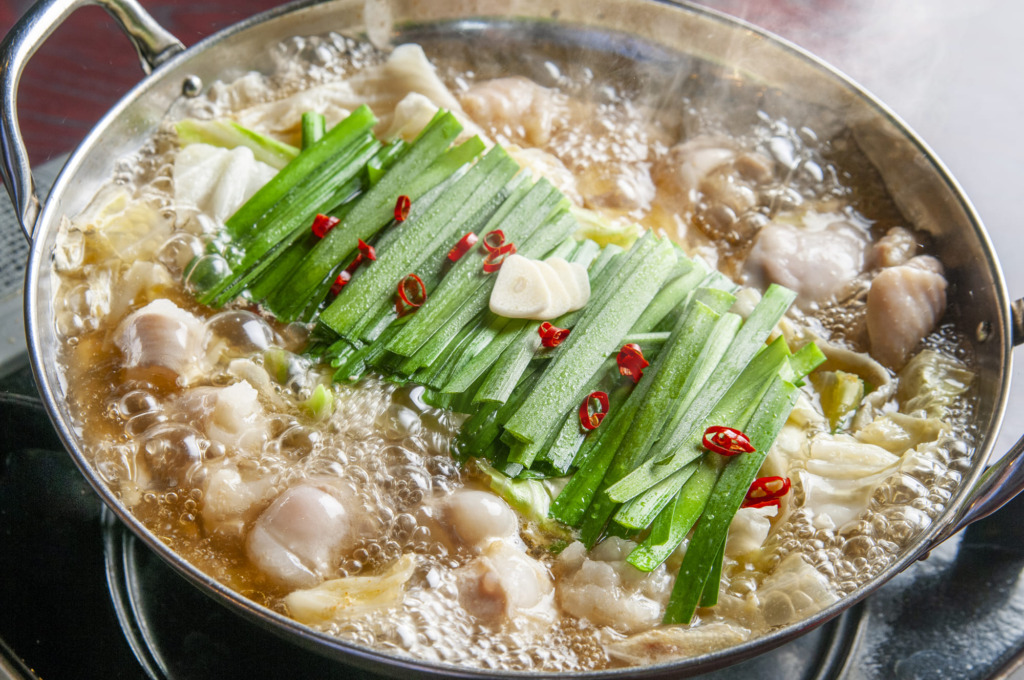
A nabe dish in which beef or pork hormone and vegetables such as cabbage, tofu, chives, etc. are simmered together. You can choose the flavor of the nabe, such as soy sauce or miso. Some stores specializing in motsunabe are only available in Fukuoka. Popular restaurants are crowded, so reservations are recommended.
Hakata Tonkotsu Ramen(博多とんこつラーメン)
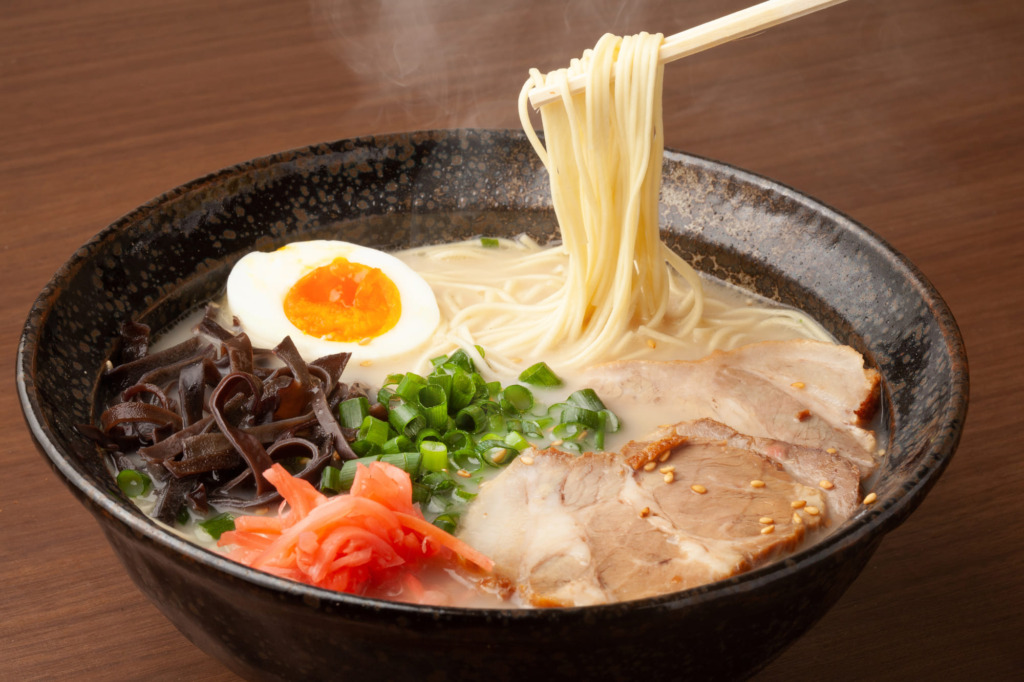
Hakata tonkotsu ramen features a cloudy pork bone-based soup and ultra-thin noodles. You can choose the hardness of the noodles, such as soft or hard, and tell the waiter how hard you prefer it when you order. You can also order another bowl of noodles called “kaedama. Since the soup remains the same and only the noodles are added, be sure to leave the soup in the bowl when you order more noodles.
Spicy pollack roe(明太子)
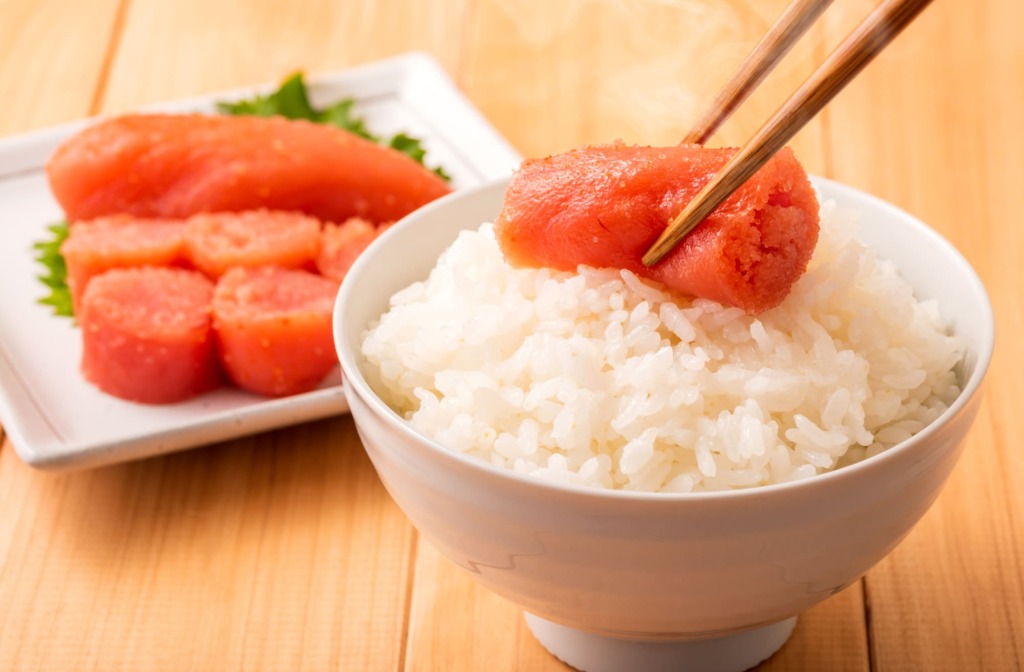
Pollack roe seasoned with chili peppers and other seasonings. It is a salty, tangy, and spicy ingredient. In Japan, it is popular as an ingredient that goes well with rice, but it is also a versatile ingredient used in dishes such as pasta and bread. Various types of spicy pollack roe are sold at airports and train stations, making it a good souvenir.
View the illumination
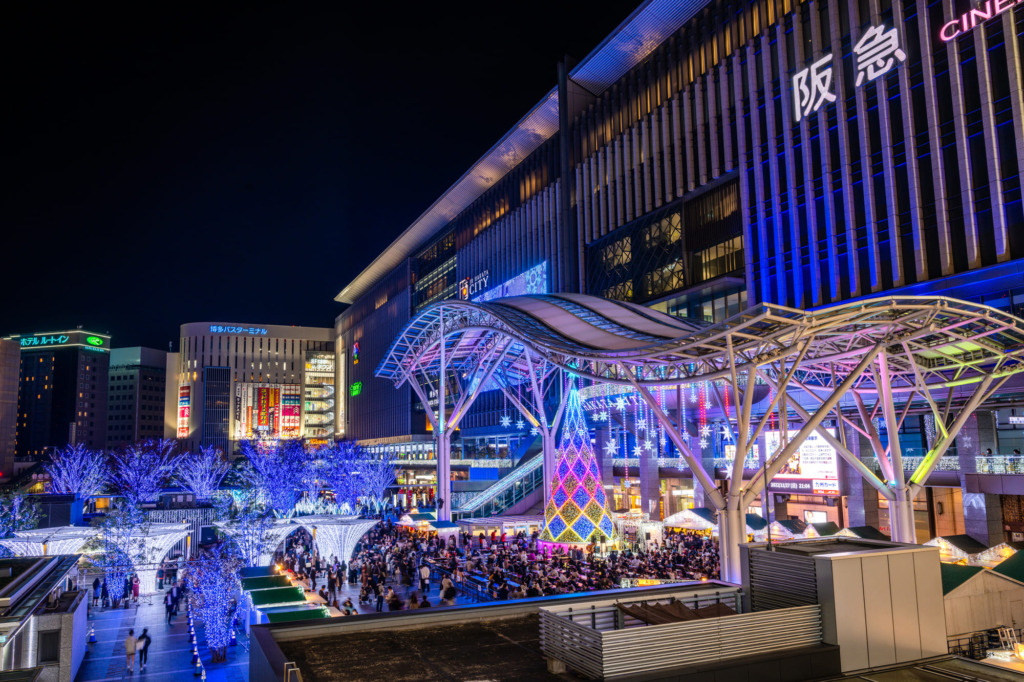
One of the events to look forward to in the fall and winter is illumination. Colorful and warm lights envelop the city at night. Some of Fukuoka’s illumination periods start as early as October and last until February of the following year. Please check the official website and SNS for the dates of each illumination.
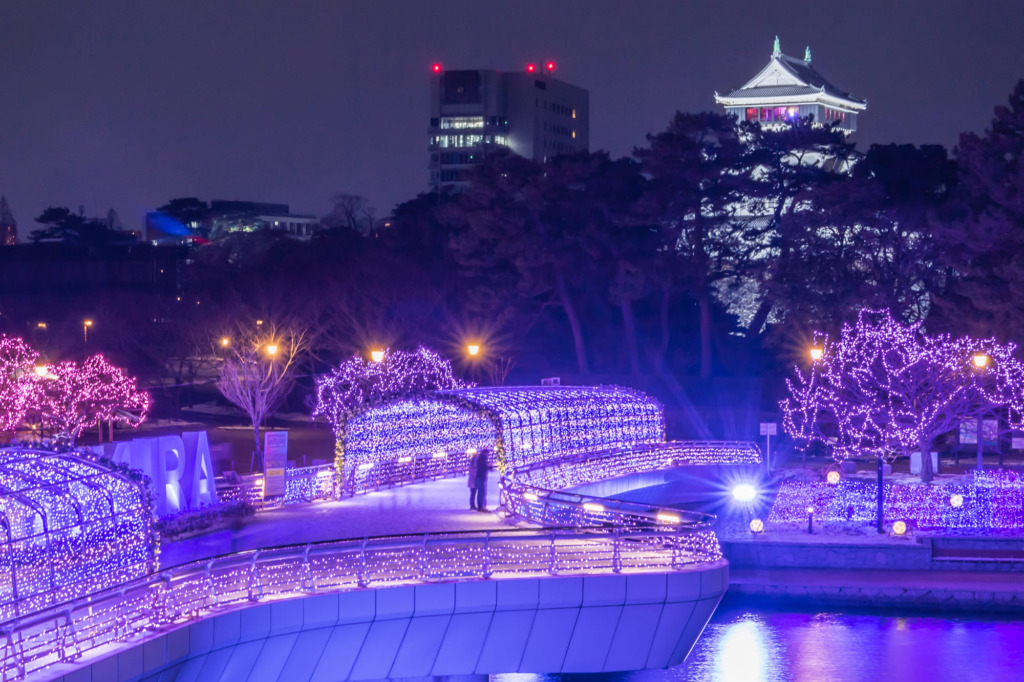
In December, Christmas events are held in central areas such as Hakata and Tenjin. Enjoy the unique scenery of the city at this time of year with your family, loved ones, or friends.
Enjoy year-end and New Year’s events
During the year-end and New Year’s holidays in Japan, it is common to spend time at home and enjoy family reunions. At the end of the year, there is a culture unique to Japan, such as cleaning up to welcome the New Year in a good mood and visiting shrines at the beginning of the year. Below we will introduce some of the unique meals and events of the Japanese New Year’s holiday season, so please visit Japan during this time of year.
Toshikoshi soba(年越しそば)
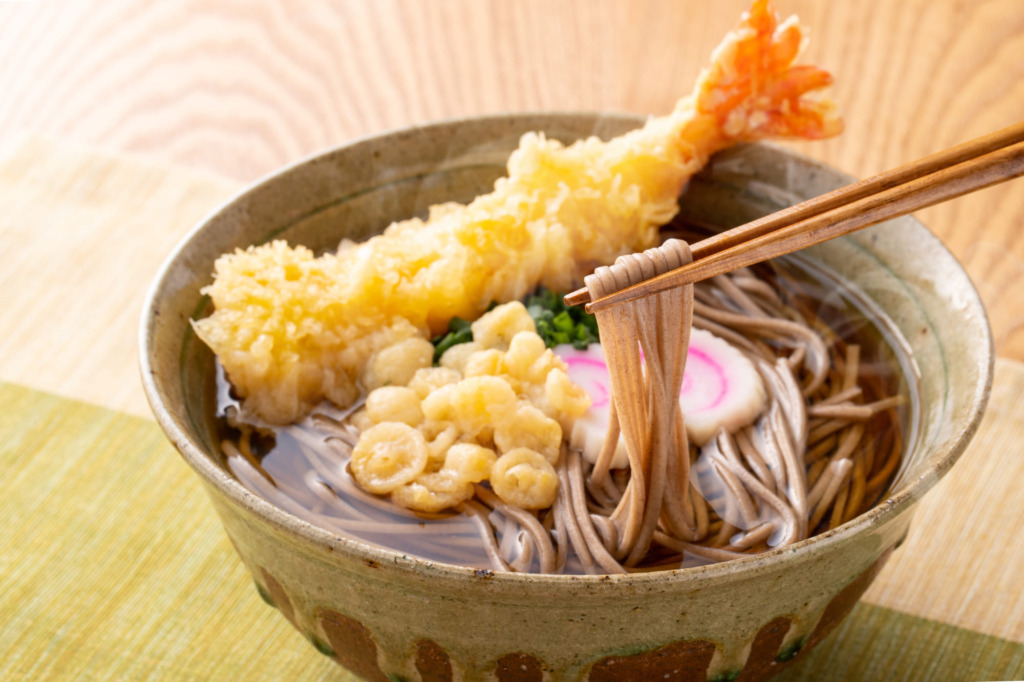
In Japan, there is a custom of eating soba noodles called “Toshikoshi soba” on December 31, the last day of the year. There are several meanings of “Toshikoshi soba,” but it is generally believed that it is a wish for a long life, like long, thin soba. It is also interesting to note that each prefecture has its own unique New Year’s Eve soba.
Osechi (おせち)
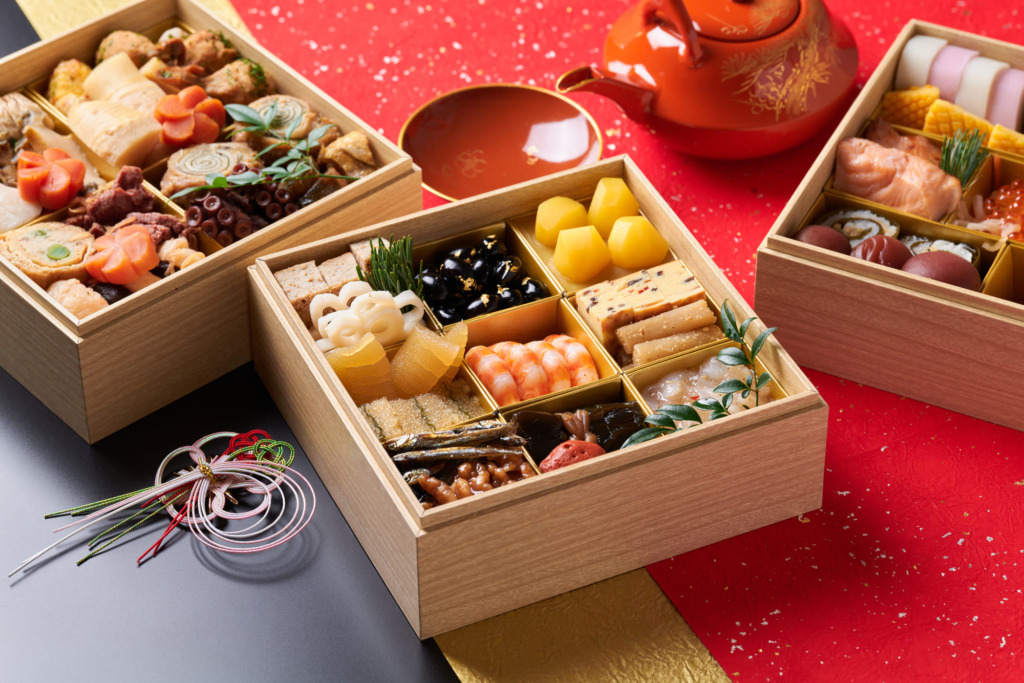
Osechi is a traditional Japanese food eaten during the Japanese New Year (the first week of January). Osechi is usually prepared by December 31, with some people making their own osechi and others buying them.
Various dishes are packed in a square box called jyuubako, which is very bright in appearance. Each of the ingredients in Osechi dishes is also characterized by the wishes that are put into them, such as black beans represent the ability to live healty life on beansf, lotus root for a good outlook on the future, and so on.
First shrine visit of New Year (初詣)

There is an event called “Hatsumode,” in which people visit shrines for the first time after the New Year. Many visitors come to pray for safety and health in the coming year. Some shrines have food stalls lined up along the approach to the shrine, creating a lively festival-like atmosphere.
Hatsumode is generally held during the period from January 1 to 3, known as “Sanganichi,” but there is no problem even if you go past this period. However, all shrines are quite crowded, so if you do not like crowds, it is recommended to go to Hatsumode after the first three days of the New Year have passed.
Enjoy seasonal ingredients
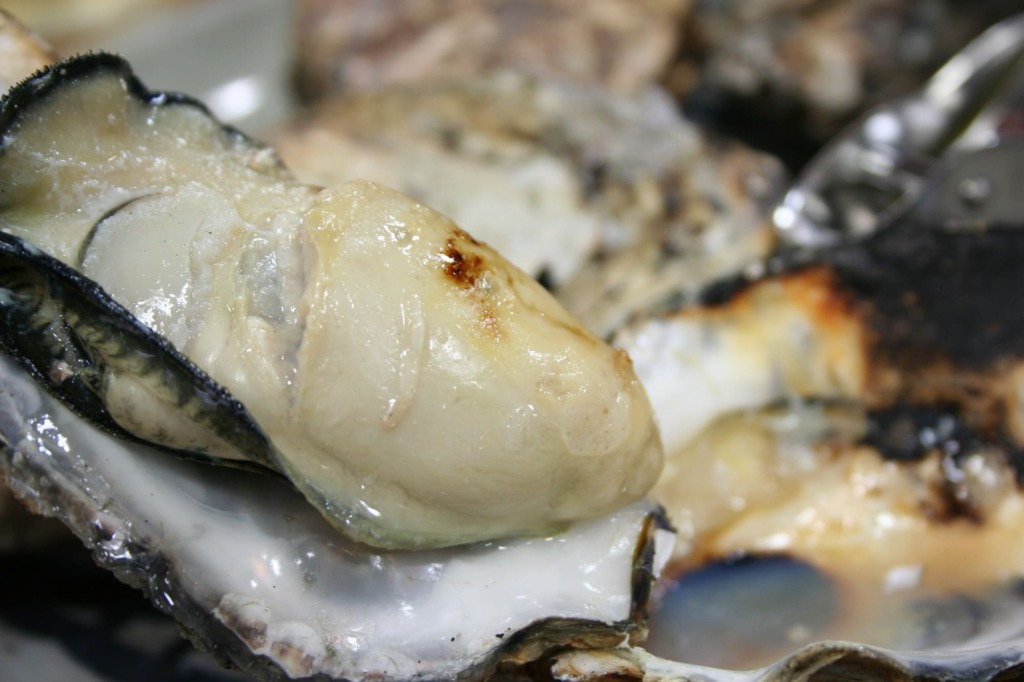
In Fukuoka, oysters, yellowtail, and puffer fish are in season in winter and more delicious. Oysters, in particular, are characterized by the large, rich flavor of each oyster. There are oyster houses where you can grill and taste fresh oysters on the spot, so please enjoy oysters to your heart’s content.

Fukuoka’s famous fruit, strawberries, also begin to appear in stores around December. From this time, strawberry picking experiences begin at various farms, so those who want to eat a lot of Fukuoka’s delicious strawberries should definitely try it.
Fukuoka in December
In December, the average temperature in Fukuoka is about 4 to 12 degrees Celsius, which is when the winter chill is in full swing. Although it is rare, snow may fall during the winter season. The atmosphere will be lively with events taking place toward Christmas and the end of the year.
Fukuoka in January
January is the coldest month of the winter season in Fukuoka, with average temperatures ranging from about 3 to 10 degrees Celsius. The windy days make the temperature feel even colder. At the beginning of the year, shrines are crowded with people who go to pray. For those who want to relax, it is recommended to go to a hot spring to relieve daily fatigue. When going out, be sure to wear a heavy coat or down jacket to protect yourself from the cold.
Fukuoka in February
February in Fukuoka is not as cold as January, but the average temperature is still low, ranging from about 4 to 12 degrees Celsius. Illuminations and other winter events are still being held, so be sure to wear gloves, scarves, and other winter protection to enjoy the romantic atmosphere of the city.


